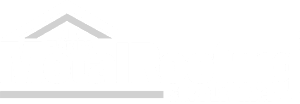Does a Metal Roof Lower Homeowners Insurance in Central Florida?
Does a Metal Roof Lower Homeowners Insurance in Central Florida?
Understanding Homeowners Insurance in Central Florida
In Central Florida, homeowners insurance is more than just a safety net—it’s a necessity. The region faces unique challenges like hurricanes, torrential rains, and relentless sunshine. These weather conditions can wreak havoc on homes, especially roofs, which is why metal roofing is perfect for Florida’s climate. Because of these risks, insurers often charge higher premiums compared to other parts of the country. Homeowners must ensure their policies cover storm-related damages, flooding, and wind damage, which are common occurrences in this area.
When calculating premiums, insurance companies evaluate various factors, including the home’s age, location, and construction materials. One of the most critical considerations is the roof. Insurers assess its condition, material, and expected lifespan since roofs bear the brunt of Central Florida’s harsh climate. A well-maintained, durable roof can significantly influence your insurance rates, making it an essential factor for homeowners to consider.
Characteristics of Metal Roofs That Affect Insurance Rates
Metal roofs are known for their impressive durability and longevity. Unlike traditional asphalt shingles, which typically last 15-20 years, the lifespan of metal roofing can be 40-70 years with proper maintenance. This extended lifespan reduces the frequency of replacements, which appeals to insurance companies looking to minimize claims related to roof repairs or replacements.
Another standout feature of metal roofs is their ability to withstand extreme weather. In hurricane-prone Central Florida, metal roofs are engineered to resist high winds , hail, and even fire. Their interlocking panels provide exceptional stability, reducing the likelihood of damage during storms. This resilience makes them a favorite among insurers, who see them as a way to lower risk and potential payouts.
Beyond durability, metal roofs contribute to energy efficiency and sustainability. They reflect sunlight rather than absorbing it, helping to keep homes cooler in Florida’s intense heat. This reflective property can reduce cooling costs, making homes more energy-efficient. Additionally, metal roofs are often made from recycled materials and are fully recyclable at the end of their life, aligning with eco-friendly building practices that insurers appreciate.
How Metal Roofs Influence Homeowners Insurance Premiums in Central Florida
Insurance companies in Central Florida view metal roofs favorably due to their reduced risk of weather-related damage. Homes with metal roofs are less likely to file claims for roof repairs after storms, which translates to fewer payouts for insurers. As a result, many companies offer discounts to homeowners who install metal roofs, recognizing them as a proactive step toward mitigating risks.
Discounts for metal roofs typically range from 5% to 35%, depending on the insurer and specific policy terms. Factors such as the roof’s age, installation quality, and compliance with local building codes play a role in determining the exact discount. Homeowners should inquire about available incentives when purchasing or upgrading their roofs to maximize savings.
It’s important to note that not all insurance providers offer the same discounts or policies. Some may have strict requirements regarding the type of metal roof or its installation standards. To ensure you’re getting the best deal, consult multiple insurers and review their policies carefully. This proactive approach can help you secure significant savings on your homeowners insurance.
Comparing Insurance Costs: Metal Roofs vs. Asphalt Shingles in Central Florida
When comparing metal roofs to asphalt shingles, the differences in durability and replacement frequency become clear. Asphalt shingles are more prone to damage from high winds, hail, and UV exposure, leading to frequent repairs and replacements. This increases the likelihood of insurance claims, which can drive up premiums. Metal roofs, on the other hand, require less frequent maintenance and replacements, resulting in fewer claims and potentially lower insurance costs.
In Central Florida’s competitive insurance market, homes with metal roofs often enjoy lower premiums compared to those with asphalt shingles. While the initial investment in a metal roof is higher , the long-term savings on insurance and reduced maintenance costs make it a financially sound choice for many homeowners.
Common Insurance Company Policies Regarding Roof Replacement and Maintenance
In Florida, insurance companies have specific guidelines regarding roof maintenance and replacement. They expect homeowners to address roof damage promptly to prevent further issues, such as leaks or structural problems. Failure to maintain or replace a damaged roof can lead to denied claims or even policy cancellation. Insurers may also conduct inspections to assess the roof’s condition before approving coverage.
Installing a metal roof can help homeowners avoid these complications. Its durability and resistance to weather damage mean fewer instances of urgent repairs or replacements. By choosing a metal roof, homeowners demonstrate responsibility and foresight, which can positively influence their relationship with insurers and ensure continuous coverage.
Additional Benefits of Metal Roofs Beyond Insurance Savings
Beyond lowering insurance premiums, metal roofs offer numerous advantages. Many come with extended warranties , sometimes lasting up to 50 years, providing peace of mind for homeowners. Their fire-resistant properties also enhance safety, reducing the risk of fire spreading to the rest of the house. Additionally, homes with metal roofs often have higher resale values, appealing to buyers seeking low-maintenance, durable properties.
Energy savings are another significant benefit, particularly in Florida’s hot climate. Metal roofs reflect solar radiation, keeping homes cooler and reducing the need for air conditioning. This not only lowers utility bills but also contributes to a smaller carbon footprint, making metal roofs an environmentally friendly option.
Cost Considerations: Installing a Metal Roof in Central Florida
While metal roofs offer many benefits, they do come with a higher upfront cost compared to other roofing materials. On average, installing a metal roof can be two to three times more expensive than asphalt shingles. However, this initial investment is offset by the roof’s longevity and reduced need for repairs or replacements over time.
Homeowners should also consider the long-term financial benefits. Energy savings, insurance discounts, and minimal maintenance costs add up, making metal roofs a cost-effective choice in the long run. For those planning to stay in their homes for several years, the return on investment is substantial, especially in Central Florida’s challenging climate.
Tips for Homeowners: Getting Insurance Discounts for Metal Roofs
To qualify for insurance discounts, homeowners should document the installation of their metal roof and share this information with their insurer. Providing details about the roof’s materials, warranty, and compliance with local building codes can strengthen your case for a discount. Keeping records of maintenance and inspections is also helpful in demonstrating the roof’s condition.
Shopping around and comparing quotes from different insurance providers is crucial. Not all companies offer the same discounts or policies, so it pays to explore your options. Some insurers may have specific programs or incentives for homes with metal roofs, so don’t hesitate to ask questions and negotiate for better rates.
Frequently Asked Questions
1. Does every insurance company in Central Florida give discounts for metal roofs?
No, not all insurers offer discounts for metal roofs. It varies by provider, so it’s important to check with your insurer directly.
2. How much can I realistically expect to save on insurance with a metal roof?
Typical discounts range from 5% to 35%, depending on the insurer and policy specifics.
3. Will my insurance increase if I don’t replace a damaged roof?
Yes, insurers in Florida may drop coverage or refuse renewal if a damaged roof is not replaced promptly.
4. Are metal roofs worth the extra installation cost for insurance savings?
While metal roofs cost more upfront, durability, energy savings, and insurance discounts often make them cost-effective over time.
5. Does having a metal roof improve my home’s resilience to hurricanes?
Yes, metal roofs are engineered to resist high winds and severe weather common in Central Florida.
Conclusion
In Central Florida, installing a metal roof can often lead to lower homeowners insurance premiums due to the roof’s durability, resistance to severe weather, and long lifespan. Insurance companies recognize the benefits of choosing metal roofing and may offer significant discounts, sometimes up to 35%, making metal roofs a smart investment both for protection and cost savings.
Homeowners considering a metal roof should actively communicate with their insurance providers to understand available discounts and policies. Beyond insurance savings, metal roofs bring energy efficiency and enhanced home resilience in Florida’s challenging climate. For those seeking to reduce insurance costs while improving home durability, embracing metal roofing is a practical choice worth exploring.
If you’re ready to take the next step, consult with a trusted roofer and your insurance agent to explore how a metal roof can benefit your home and wallet.

